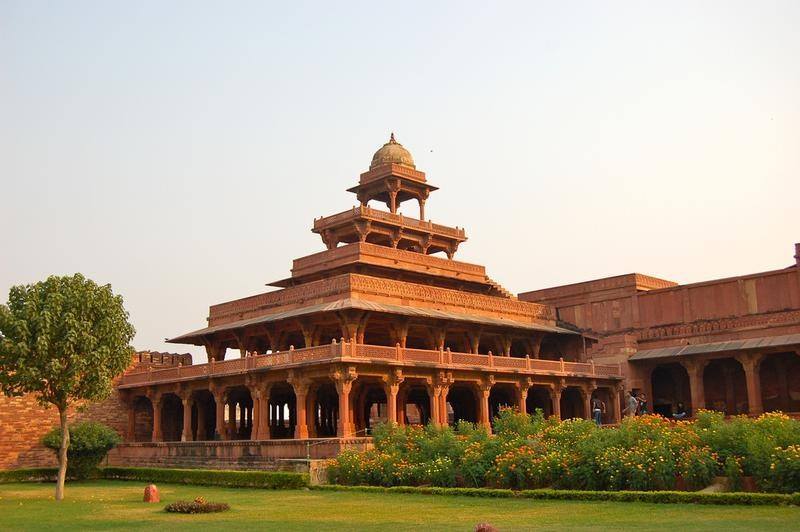Introduction: Panch Mahal, also known as the “Palace of Five Storeys,” is an exquisite architectural marvel located in Fatehpur Sikri, near Agra in India. It is a fascinating structure that served as a royal residence during the reign of Emperor Akbar, the great Mughal emperor. The Panch Mahal showcases the artistic and engineering brilliance of the Mughal era, leaving visitors awe-inspired by its grandeur and unique design.
History:
The construction of the Panch Mahal was initiated by Emperor Akbar in the late 16th century. It was designed as a leisure palace for the emperor and his queens. The palace is believed to have been a place of relaxation, where the royal family could enjoy cool breezes and panoramic views of the surrounding landscape. However, the exact purpose and function of the Panch Mahal remain a subject of speculation among historians.
Architecture and Design:
The Panch Mahal is a five-storied structure that stands on a raised platform. It is an architectural masterpiece that reflects a blend of Mughal and Hindu design elements. The palace features a pyramidal shape, with each level gradually decreasing in size. The ground floor has 84 columns, while the upper levels have progressively fewer columns, creating an open and airy structure.

Features and Attractions:
The Panch Mahal is known for its unique design and the intricate craftsmanship displayed in its construction. The palace is open from all sides, allowing the gentle breeze to flow through its arched openings. The columns on each level are delicately carved with geometric and floral patterns, showcasing the artistic finesse of the Mughal artisans. The topmost floor offers panoramic views of the surrounding complex, adding to the allure of the structure.click here
Visiting the Panch Mahal:
Visitors to Fatehpur Sikri can explore the Panch Mahal and marvel at its architectural brilliance. The palace is easily accessible within the complex and is a must-visit attraction for history enthusiasts and architecture lovers. While visiting, it is advisable to take a guided tour to learn about the historical significance and intricate details of the palace.
Preservation and Conservation:
Efforts have been made to preserve the Panch Mahal and protect its architectural heritage. The palace is maintained by the Archaeological Survey of India (ASI), and regular restoration work is conducted to ensure its structural integrity. Conservation efforts aim to safeguard the beauty and historical value of the palace for future generations.
Conclusion || Panch Mahal
The Panch Mahal is a remarkable structure that showcases the architectural genius of the Mughal era. Its unique design, grandeur, and historical significance make it a must-visit attraction in Fatehpur Sikri. Exploring the palace allows visitors to appreciate the artistic craftsmanship, marvel at the engineering techniques employed, and immerse themselves in the grandeur of Mughal architecture. The Panch Mahal stands as a testament to the rich cultural heritage of India and serves as a reminder of the grand legacy of the Mughal empire.
Book Your Flights : Here 30% OFF on Booking
Book Your Hotels : Here 20% OFF on Booking

0 Comment